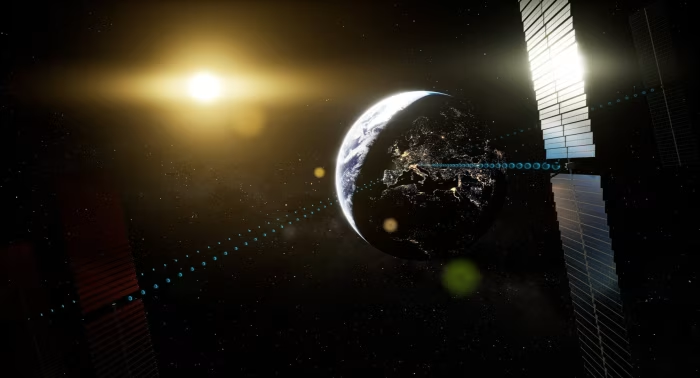How to Make Space-Based Solar Power a Reality
time:2023-10-18 09:50:08 Views:0 author:Jinan Freakin Power Ltd.
Concerns over climate change are fuelling breakthroughs in satellite technology that harnesses the sun’s energy.
The young researchers gathered on the rooftop of Caltech’s engineering laboratory in Pasadena on a balmy May evening did not set out to make history that night. But after a long day setting up equipment to test a solar power satellite, the professor leading the project told them to grab something to eat and come back. “It was close to 10pm and we said, ‘Let’s have a go. Let’s do a dry run,’” says Ali Hajimiri, professor of electrical engineering at the California Institute of Technology. “At first we thought we weren’t detecting a signal. Then it started coming in and getting stronger.”
The team was elated. For the first time, a detectable amount of solar power had been beamed wirelessly from space back to Earth. No matter that it was insufficient to power even a lightbulb. It was proof to a growing community of space solar power advocates that it was technically possible to supply a power-hungry planet with energy from space. “The sun is the closest thing we have to an infinite energy source,” says Paul Jaffe, an electronics engineer at the US Naval Research Laboratory who has studied space-based solar power for 16 years. “You [could] create a global energy network that could provide energy potentially anywhere on Earth. Space solar could do for energy what GPS did for navigation.”
Space solar power was first mooted by science fiction writer Isaac Asimov in his 1941 short story “Reason”. In reality, however, it has long been dismissed as too costly and technologically challenging to be commercially viable. But as the sense of urgency over the threat of climate change grows and the economics of space evolve, governments around the world are reconsidering its potential. Researchers in China, the US, UK, Japan and Europe are all studying its feasibility, with a view to possibly launching experiments into space before the end of the decade.

China’s ZhuRi programme — translated as “chase the sun” — has plans to put a pilot power plant into orbit generating 20 megawatts of power by 2035. In the UK, a group of entrepreneurs behind government-backed start-up Space Solar are even more ambitious. They aim to build a gigawatt scale power plant in space by the same date, scaling up to a fleet of plants delivering 30 gigawatts into the energy grid by the 2040s. And though Caltech’s experiments have been funded by billionaire philanthropist Donald Bren rather than the government, the US Air Force Research Laboratory is planning a power-beaming demonstrator from low Earth orbit in 2025.
Many proponents of space-based solar power (SBSP) believe the technology has greater potential than nuclear fusion to help the world meet its net zero targets. “All of the physics [of space-based solar power] have been demonstrated, tested, and verified,” says John Mankins, a former Nasa physicist whose work on SBSP over more than 25 years has earned him the sobriquet “godfather of space solar power”. Although US scientists claimed to have achieved a net energy gain in a fusion reaction last year, the process “is still some years away from demonstrating that the system would generate more energy than you have to put into it,” he says.
With sufficient investment, adds Sanjay Vijendran, who leads the European Space Agency’s Solaris project, “space solar power could be available sooner than fusion”.




